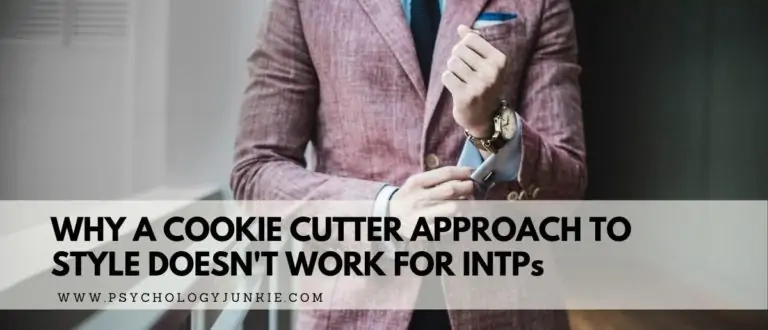What is Personality Typing? An Intro for Beginners
Have you ever wanted to know yourself better? What about your spouse, or your children? Do you find yourself confused by the way people communicate with you, or find it hard to relate to certain people? Knowing about personality type can take you leaps and bounds in your understanding of yourself and others. I’ve spent a long time discussing the validity of the MBTI, Now is the time to give you an introduction to what it’s all about, and how it can benefit you personally!
Not sure what your personality type is? Take our new personality questionnaire here. Or you can take the official MBTI® here.
Table of contents
Estimated reading time: 7 minutes
The MBTI model of personality was developed by Katherine Briggs and Isabel Briggs Myers, and was taken from the works of Carl Jung, who developed a study on psychological types. Jung wrote that “what appears to be random behavior is actually the result of differences in the way people prefer to use their mental capacities.”
In 1921, Carl Jung published Psychological Types, which introduced the idea that each person has a distinct psychological type or set of preferences. Things like extraversion and introversion were discussed, and how people make decisions. Unfortunately, the academic language of the book made it hard for many people to read and so his theories didn’t become very widespread.
During World War II, Katherine Briggs and Isabel Briggs Myers set out to find an easier way for people to use Jung’s ideas in everyday life. They felt that if Jung’s theory could be written and applied in a more easy-to-read way, that it could be extremely beneficial to people everywhere.
The Basics of the MBTI®
The MBTI categorizes your personality into one of sixteen types. These types determine where you get your energy from, how you take in information, and how you like to make decisions. Your type is identified by four letters that tell us which functions a person uses. For example, I’m an INFJ so my four letters are:
I – Introverted
N – Intuition
F – Feeling
J – Judging
So these letters basically say that I’m an introvert, my dominant function is intuition, my secondary (auxiliary) function is feeling, and the J basically means that my first extroverted function is a judging function (Feeling) and not a perceiving function (sensing or intuition). This may sound kind of confusing now, but it does get simpler!
Each Myers-Briggs personality type uses all 4 preferences (thinking, feeling, sensing, intuition), but everyone has a preference for two of these and is less skilled at using the other two. An ESFJ is most skilled at Sensing and Feeling (hence the ‘SF’ in the name), but not as good with intuition or thinking.
For the sake of simplicity, we’re just going to cover the basics.
Extraversion/Introversion
While everyone has extraverted and introverted qualities, most people will prefer one method of interacting with the world over the other. Don’t confuse extraversion or introversion with shyness or timidity, both extroverts and introverts can be shy, and that has nothing to do with either.
Extraversion: Where do you get your energy from? Extraverts enjoy the outer world of people and things. Extroverts usually need to process thoughts, ideas, and experiences through speech. They tend to feel energized by talking and doing, and often enjoy social settings and feel energized by being with others. They will want occasional alone time, but not as often as introverts.
Introversion: Introverts get their energy more from the internal world. They need and desire quiet time for reflection. They tend to feel drained by too much talking or doing, and need time to think and consider. They think and reflect before speaking, and have a strong need for privacy.
One last thought on the I/E Preference: Extraverts will want alone time sometimes, and introverts don’t usually want to hide in a cave all alone for the rest of their lives. Most people are more like ambiverts, then extreme extroverts or introverts. However, everyone has a preference, even if it’s slight, for extraversion or introversion.
Sensing/Intuition
Everyone uses sensing and intuition. However, N personality types prefer and have more advanced intuition, while S personality types prefer and have more advanced sensing. Sensing and intuition are the perceiving functions, which determine how you take in information.
Sensing: Do you take in information through your five senses? While all people do this to an extent, sensors are especially more aware of what comes in through sensation. They are more focused on the present and use that focus to create practical solutions. They think in a linear fashion and don’t like guesswork or abstract theories. They like concrete information. People often describe Sensors as “down-to-earth” or “grounded.”
Intuition: Do you live in the world of theories and possibilities? Are you more focused on the future than the present? Intuitive personality types prefer to think of what could be, and are highly imaginative. They think in terms of connections and they get hunches that influence their decisions. They love theories and guesswork and the world of symbols and dreams.
One last thought on the S/N preference: There’s a big difference between extraverted and introverted intuition, and extraverted and introverted sensing. You can find out more about that here, but the characteristics mentioned above will usually remain true for any S or N type.
Thinking/Feeling
Thinking and feeling are judging functions, this means that they determine how you make decisions. Everyone has access to both Thinking and Feeling, but everyone has a natural preference for one over the other.
Thinking: Thinkers are practical, logical, and go with what makes sense. They are persuaded by facts, figures, and statistics and usually make decisions by weighing the pros and cons. They are very straightforward and blunt in their manner of speech. Now, this doesn’t mean that they all live like Vulcans! All thinkers have a feeling function. They just will rely more on logic than on personal feelings or emotions. They don’t usually mind conflict too much, as long as it’s impersonal.
Feeling: Feelers make decisions based on their values, ethics, and their need for internal or external harmony. They are relationship-focused and crave harmony in every decision-making process. They focus on the emotional impact of what is said. They may absorb other people’s emotions (Extraverted feeling) or be very aware of their own inner feelings and values (Introverted feeling). They dislike conflict and criticism but can become very confrontational if one of their values is being violated.
To learn more about the thinking functions, click here.
To learn more about the feeling functions, click here.
Judging/Perceiving
The judging and perceiving preferences can be more confusing to determine for a lot of people. Everyone has judging and perceiving functions, having a ‘J’ or ‘P’ at the end of your type basically means one of the following:
Judging: Judgers crave closure and like to have decisions finalized. They enjoy planning and making to-do lists. They enjoy schedules and knowing what lies ahead, and may have a harder time being spontaneous or enjoying surprises.
Perceiving: Perceivers like to leave their options open and wait to make decisions until they’ve explored all the alternatives. They are more spontaneous and improvisational. They have a harder time following strict schedules or making decisions quickly.
To learn more about the judging or perceiving preference, click here.
Where’s the best place to find out my MBTI type?
Online MBTI tests are often flawed because there’s a lot more to the MBTI and how you use the functions than what can be covered in a quick test. The best way to find out your MBTI type is through the official MBTI instrument.
Find out more about your personality type in our eBooks, Discovering You: Unlocking the Power of Personality Type, The INFJ – Understanding the Mystic, The INFP – Understanding the Dreamer, and The INTJ – Understanding the Strategist. You can also connect with me via Facebook, Instagram, or Twitter!









2 Comments